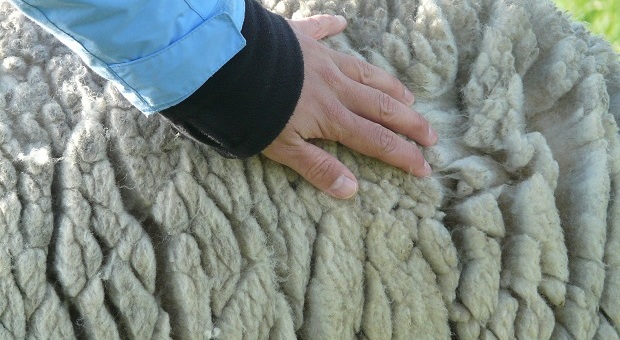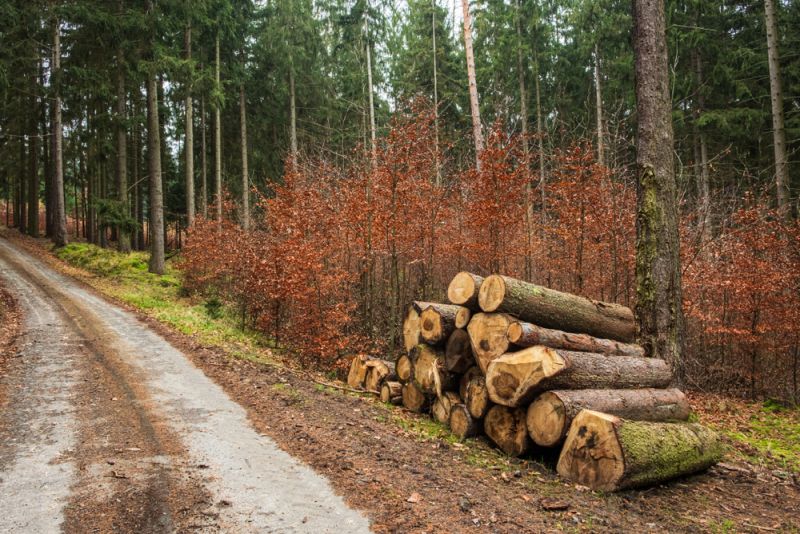Cashmere sweaters, fleece socks and woolen blazers; wool has held a place in our lives for eons, and for good reason. This wonderful textile has many qualities including elasticity, fire-resistance, durability and resilience that make it an excellent medium for a wide array of purposes.
Wool absorbs moisture more effectively than cotton, wicks it away from your skin, and dries faster than any other fiber.
The survival uses of wool are probably way more than you can imagine, just off the top of your head. Before we get into the actual uses, let’s discuss these qualities; it’s elastic, fire-resistant, and resilient.
Now, let’s talk about the survival uses of wool maybe you’ll get some ideas that we haven’t thought of yet!
Where Does Wool Come From?
The answer here seems obvious, right? Wool comes from sheep. That’s right, but it’s not a complete answer. Wool can come from a wide variety of animals; sheep, yaks, rabbits, alpacas, llamas, oxen, camels, and even goats. Each of these animals provides wool that is great for a variety of uses, though sheep wool is probably the most versatile because there are so many different breeds of sheep.
Though nearly every sheep has wool, some of it is fine and suited to clothing, while other sheep produce wool that is too course; it’s best used for stuffing or for carpeting. You’ve likely heard of wool made from rabbits, though you may not realize it; that beautifully soft angora sweater that you love to wear is made from rabbit fur.
The wonderful thing about wool is that, regardless of what animal it comes from, the animal isn’t harmed during the process. As a matter of fact, removing the wool (called shearing) actually makes the animal more comfortable.
There are different grades of wool, which is determined by the diameter of the fiber and the crimp. The crimp is exactly what it sounds like; the amount of wave in the hair. Generally, the more crimp wool has, the finer it is.
Some of the finest wool is Merino, which comes from the Merino sheep. This is excellent for clothing. Wool with less crimp is coarser and better suited for use as carpets, batting or insulation inside jackets.
Historically, wool was used by just about everybody because of its ability to hold in heat and wick away moisture from the skin but a particular wool was used by sailors for sweaters. Usually wool is cleaned of its natural lanolin and treated before it’s spun into wool, but sailors’ wives left the lanolin in the wool for extra waterproofing.
The wives also wove patterns into sweaters with different meanings. For instance, some patterns may represent safe sailing while others may convey plentiful fishing. Irish women also made sweaters for men who they were interested in as a way to show off her knitting skills, thus showing her readiness to be a good wife.
Who knew sweaters had such an interesting history? Anyway, back to wool and its many uses for survival.
7 Types of Wool
These are just a few types of wool, but it will give you a good idea of where to start. These are the most commonly used types of wool, but you can use what you have in a pinch. On the flip side, you may also choose to select some of your survival animals based on this information.
- Alpaca: Fine, silky, and warmer than sheep’s wool. It’s great for just about any type of clothing, though it may not have the durability of coarser wools if you need something tough.
- Angora: Has excellent heat retention and is great for thermal underclothes. It’s soft and lightweight, which makes it extremely comfortable.
- Camel Hair: Comes from the underbelly of a camel and is extremely fine and soft. It’s the best insulating of all wools, which makes it great for lining coats and winter boots. Beware though because it’s not very durable.
- Merino: This is a more traditional type of wool that comes from the Merino sheep. It’s softer than other sheep fleece and has excellent moisture wicking properties, while the outside of the wool will repel water. Great for clothing of any sort that you want to be comfortable and dry in. Makes a good blanket, too.
- Mohair: We’ve all heard of Mohair suits thanks to a popular seventies song but you probably don’t know that it comes from a goat. It’s fine and lustrous but works as well as Merino at wicking moisture and insulating. Its sheen makes it more attractive but don’t let the good looks fool you; it’s as durable (if not more so) as sheep wool.
- Cashmere: Ahh, the luxury. A cashmere sweater is known for its softness and warmth and also comes from a goat: the Kashmir goat to be exact. It’s a fine wool, and not quite as durable as other types.
- Llama: This fiber has a lustrous appearance much like alpaca hair but it’s weaker and coarser. If you need something warm and light, and durability isn’t an issue, this is a great fiber.
There are, of course, many different types of wools from sheep because there are numerous breeds but that’s an entirely different article. To learn more about different sheep breeds and which ones are best for wool, check out my other article here.
Clothing
This is the obvious use of wool. We’ve already touched on a few reasons why wool is good for clothing, but now we need to touch on which types of wool are best. You want to use wool that is fine with a higher crimp. Wool from Merino sheep, Angora rabbits, alpacas, camels and goats all produce fine wool that is excellent for clothing.
If you’re making your own yarn, you’ll have to scour it to get the debris out of it, then carded, combed and spun into yarn. Then, of course, the yarn is knitted into sweaters, socks, mittens, scarves, coats, or basically any garment that you need.
The exact method is outside of the scope of this article, but it’s quite the process, but perfectly doable if you have fleece-producing animals and the proper equipment. The process will differ a bit if you opt to leave the lanolin in the wool.
Household Items
Wool can be used to make many different household items, too. Tablecloths, curtains, rugs, and blankets made from wool are not only beautiful; they’re functional and long-lasting, too.
And remember, since wool is relatively fire-resistant, that makes it a good fiber for any of these uses because they’ll slow the spread of fire if, heaven forbid, you ever have to face that. Their insulating properties help keep heat inside the house, too.
Many carpets are still made from wool, though it’s admittedly often more expensive than synthetic fibers. Wools used for making household products are typically courser than clothing-grade wool. Though they’re not as soft, they are much more durable. Felted wool is also used as carpet padding.
Batting and Stuffing
Because of its insulating properties, wool is often used as batting for quilts, stuffing for coats, and insulation in home-made potholder mittens.
You could also use raw wool to stuff your pillows or to add the stuffing to homemade stuffed animals.
Barn Uses
Saddle blankets, horse blankets, padding underneath saddle pads and shining brushes are all good ways to use wool in the barn.
Yarn is used for the saddle blankets and horse blankets (used to keep horses warm at night or in cold weather) while wool fluff is used to pad the inside of the saddle pad as well as the back of the pad that touches the horse so that he doesn’t get sores from the saddle. Wads of wool are awesome to shine your horse’s coat or buff your car.
Protecting Fragile or Valuable Items
Fleece, wool straight off the animal and just cleaned, can be used as a liner in clothes and gloves or as padding to tuck away fragile items. Wool can also be felted, which is a process that’s used to pound it together into flat, woven pieces that can be used to line boxes, gun racks, or any other container in which you’d like to store items that you don’t want scratched, or that you’d like to keep insulated.
This felt can also be used to clean your weapons or to pad them in their boxes. You can also line your rifle strap with it, or with fleece. Speaking of lining things with fleece, you can line your purse straps, backpack straps, or even your blankets with the soft, fluffy comfort of this gift from your animals; after all, they use it to keep warm, so why shouldn’t you?
As you can see, there are many uses for wool in its various states, and I’m sure that there are many more that I haven’t even touched on that many. Truly, the survival uses of wool are limited only by your imagination! If you can think of other uses for wool, please tell us about your ideas in the comments section below.
This article has been written byt Theresa Crouse for Survivopedia.











Pingback:What You Need To Know About Using Wool For Survival | TheSurvivalPlaceBlog | March 23, 2016
|
Pingback:Back To Basics: How To Turn Wool Into Yarn | NewZSentinel | April 17, 2016
|
Pingback:6+ Tips That Could Save Your Life In A Plane Crash | Survivopedia | May 28, 2017
|